For ages, ‘ebony’ has been synonymous with beauty, both in people and nature. However, the Indian Ebony trees, known as Tendu (diospyros melanoxylon) in the Indian subcontinent, are more popular for something else. Endemic to the land its known as a source of livelihood across central India. People pluck Tendu patta (Tendu leaves) from shrubs to wrap bidis, the poor man’s cigarette.
These leaves are considered green gold in the states of Madhya Pradesh, Chattisgarh and Odisha. One of the non-wood forest product, tendu patta serve as a primary source of livelihood during the sparse summer months of April-June.

Within the verdant heart of Chhattisgarh
A work of art, an everlasting ritual.
A silent reverence, a gentle pluck
Nimble fingers, a knowing look.
A gift from nature, a source of livelihood.
The collection of ebony tree leaves, a communal ritual that brings everyone together to celebrate shared heritage and strengthens bonds. The collection of leaves starts with the sun rays of dawn peeping through the dense forests.
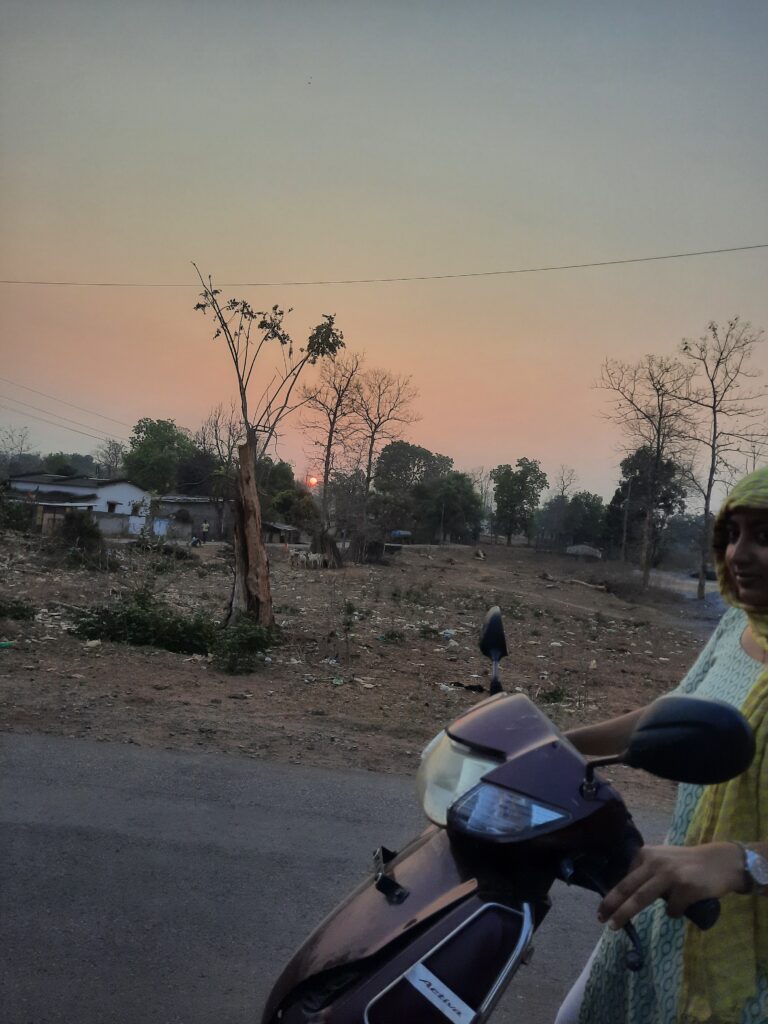
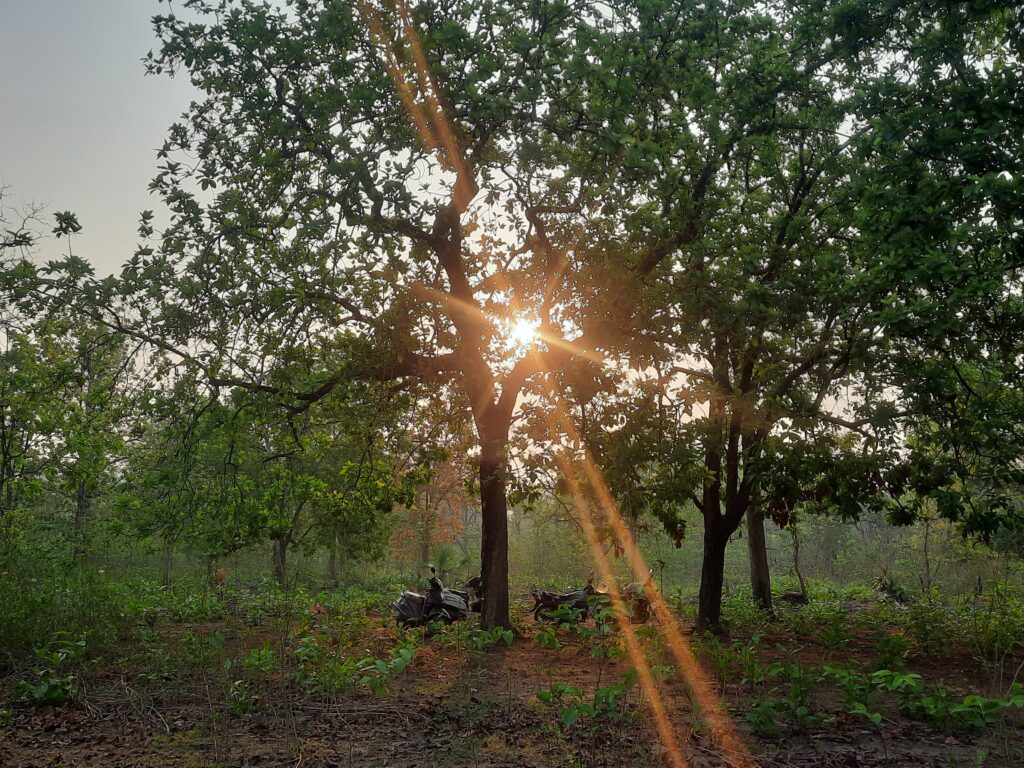
Gathering
People collect the leaves from young plants spread across vast fields. Families traditionally wake up at dawn to begin gathering. They enjoy most of their meals within the fields, eating from bowls made of Tendu patta. Everyone, young and old, participates in this process. The gathered leaves are then bundled into packs of 100. Some people continue this bundling process in the fields, while others do it at home.
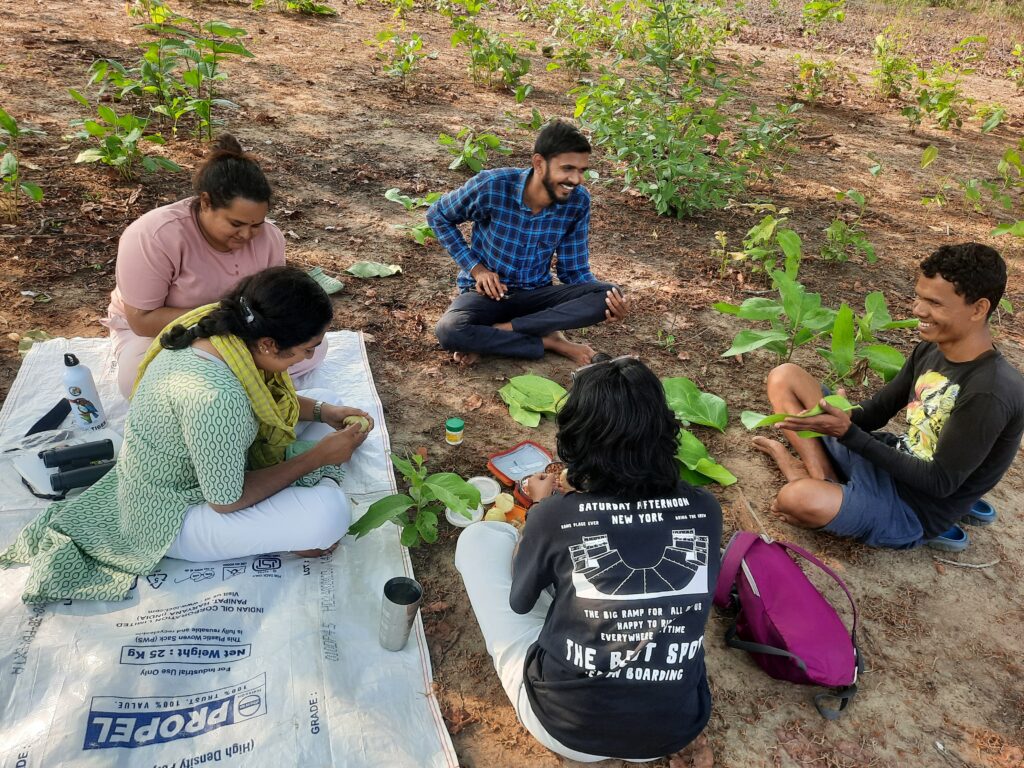
While everyone is busy on fields, plucking leaves, the village appears empty during the afternoon. Every human is on fields gathering leaves.




But during these hours one would find these residents frolicking around the village.




Transport & Array
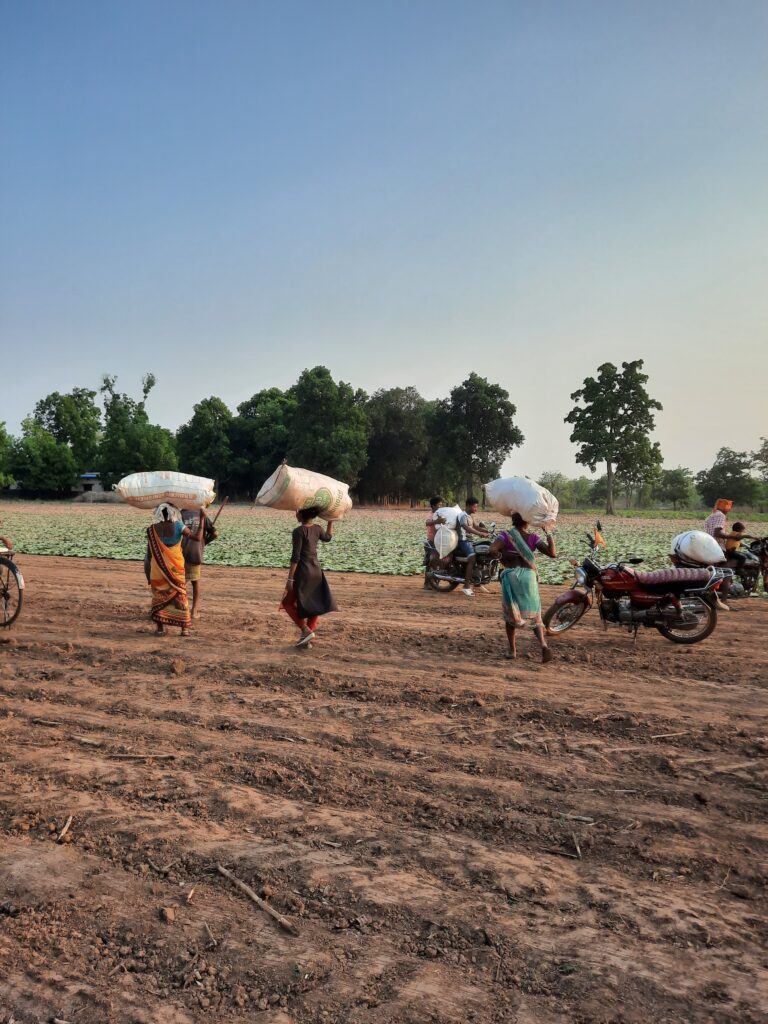
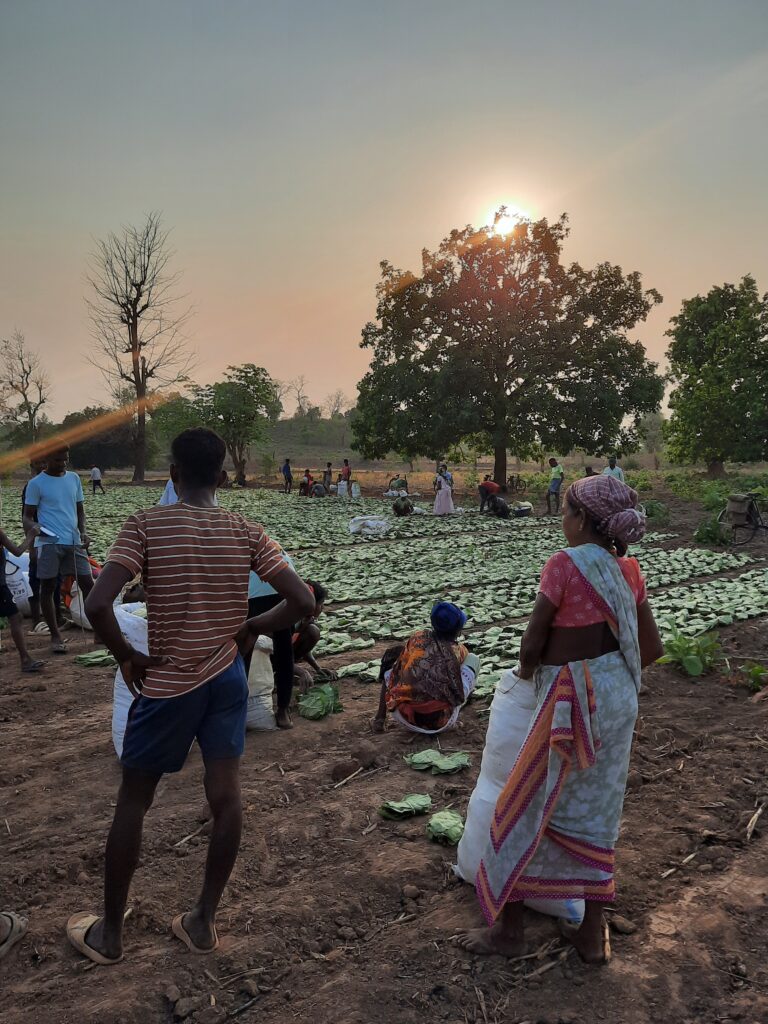
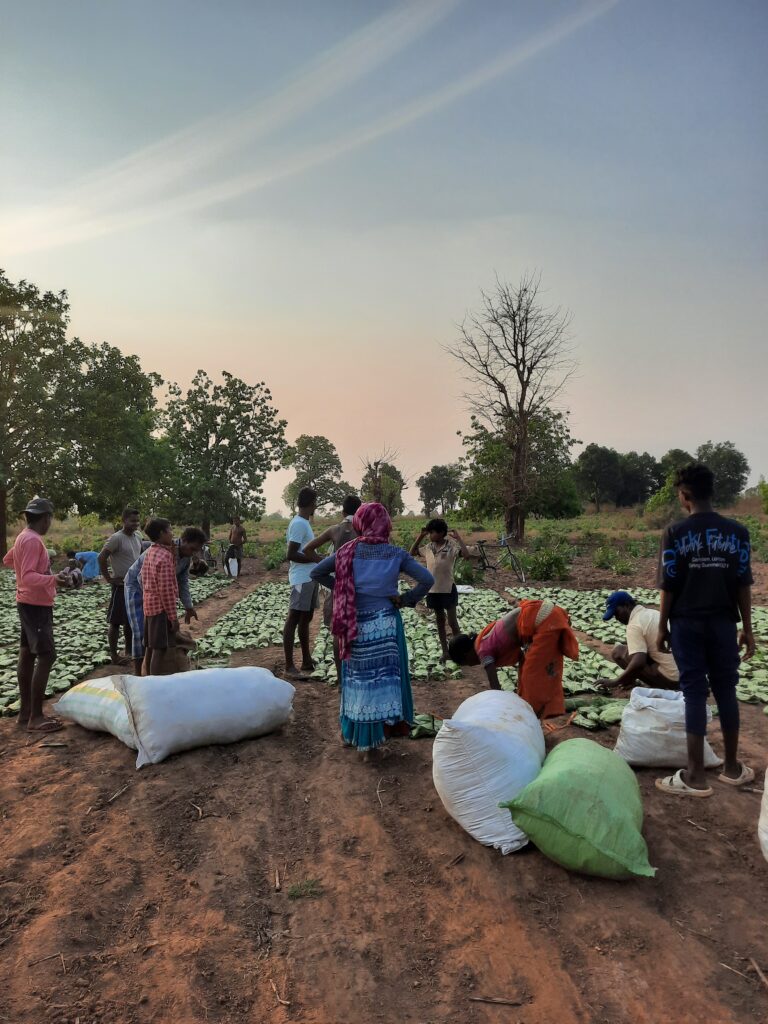



Collection

Within the communal grounds, the arrays of leaves’ bundle are recounted. They arrange the leaves in a 10X10 rows of bundles. Each bundle has 100 leaves, 50 facing one side and the rest other.
Every family has a collectors card. The Phad Munshi (manager of collection center) enters the daily collection into the card. The gatherers then receive payment for their collection, based on the standard rate. The Primary Co-operative Society pays for the collection, direct into bank accounts.


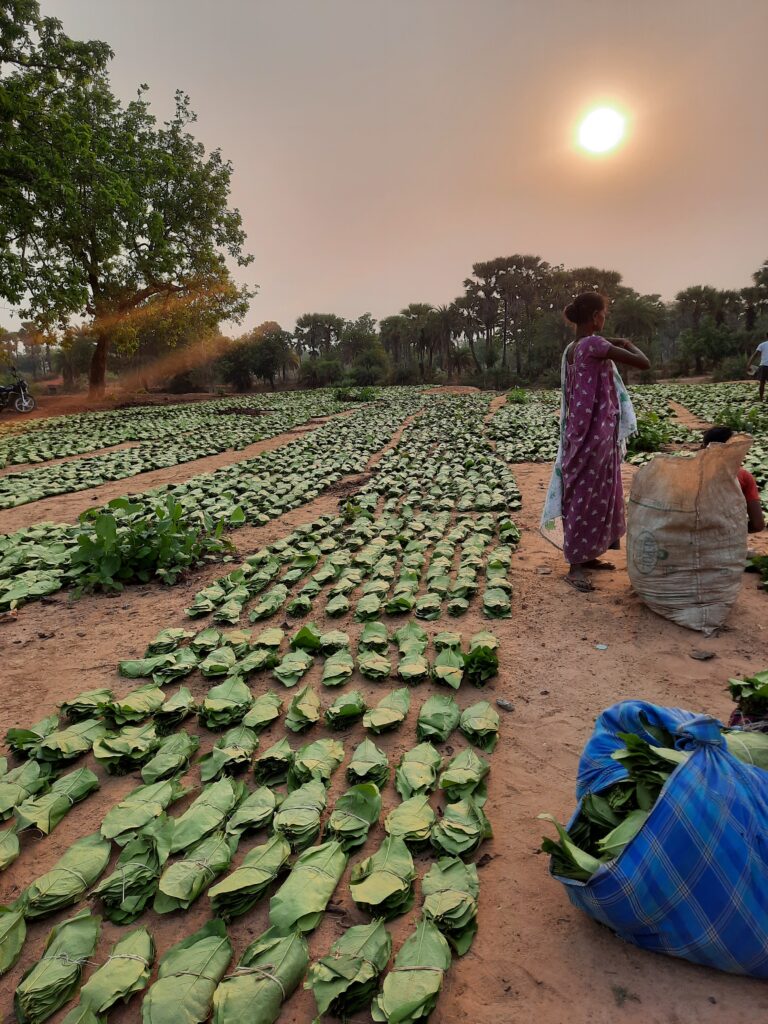
By dusk the communal ground is filled with arrays of Tendu patta bundles. These green leaves are then transported and handed over at collection centers. There is a purchaser appointed at the center that treats the leaves and stores in godown. All that is left to do now is to wait; often for 6 months or more to receive the payments based on the leaves collected.




Great